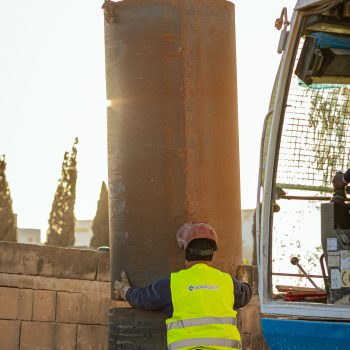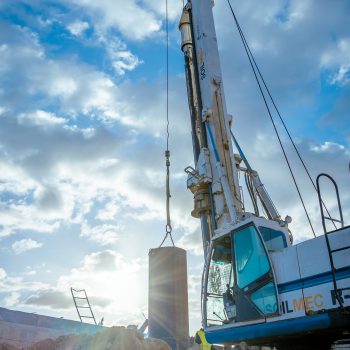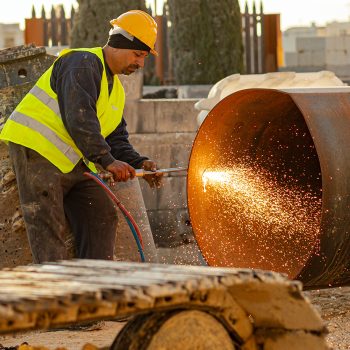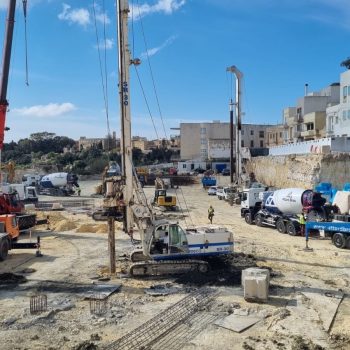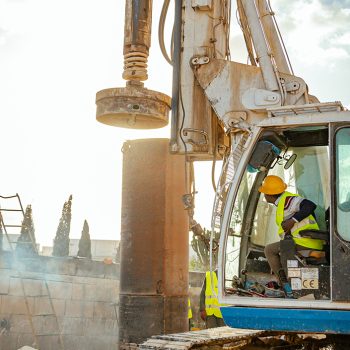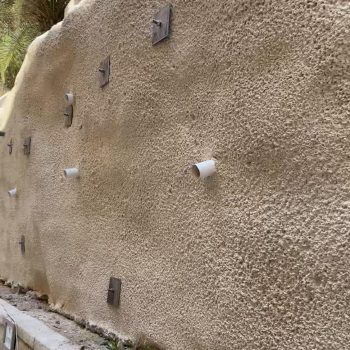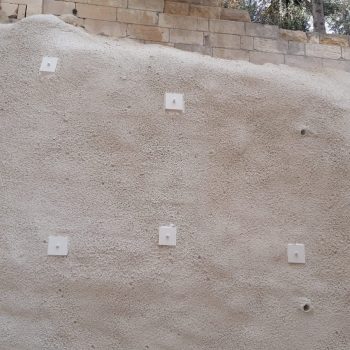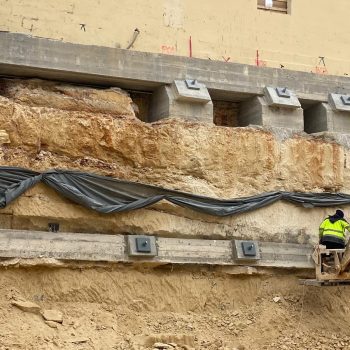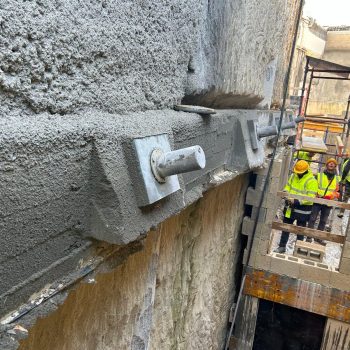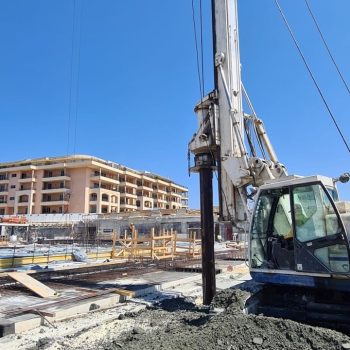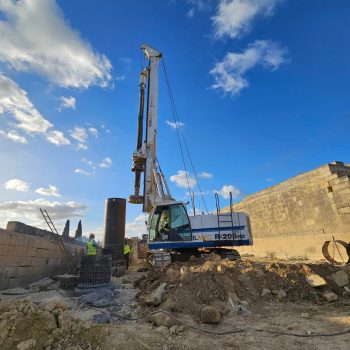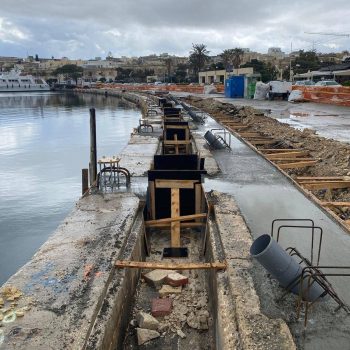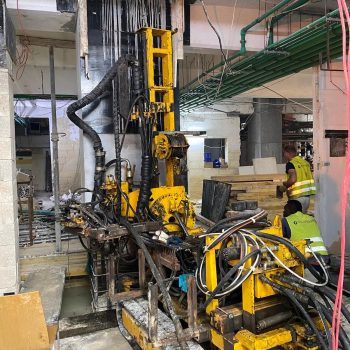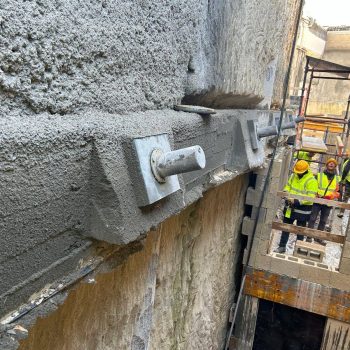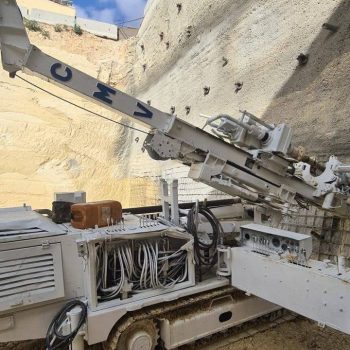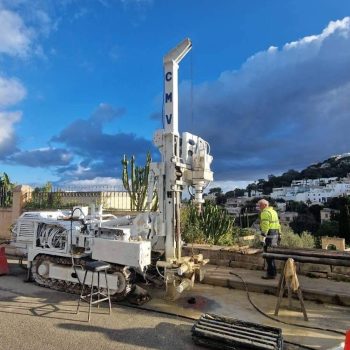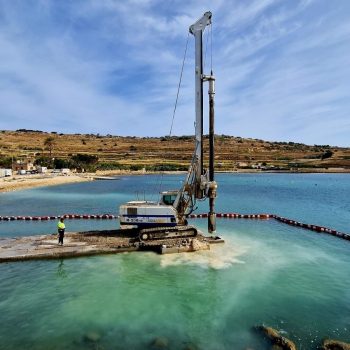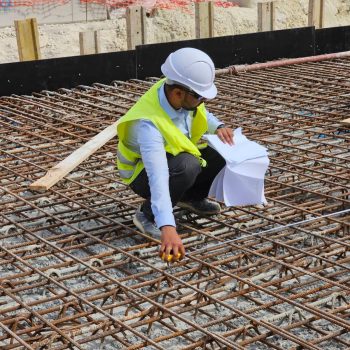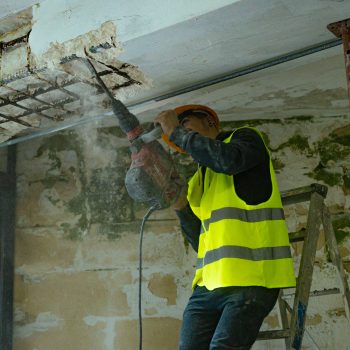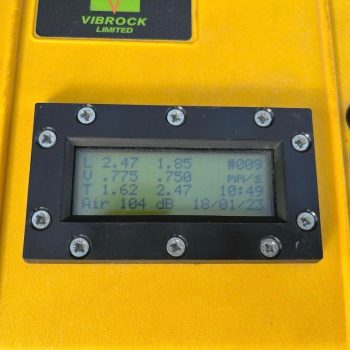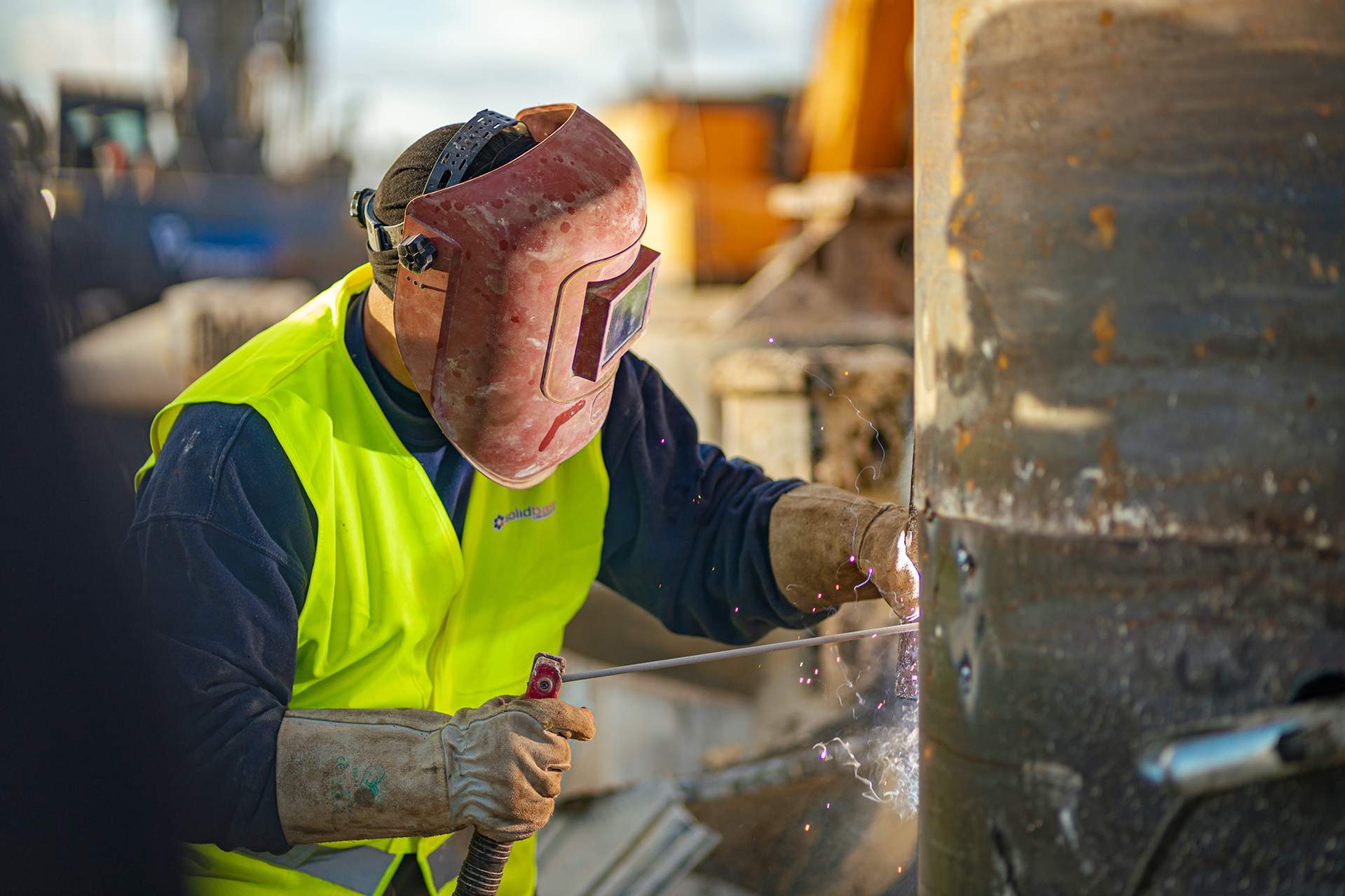At Solidbase, we boast a comprehensive arsenal of drilling and investigative equipment, ensuring our ability to tackle any challenge that comes our way. Our services are designed to provide effective solutions and guarantee your peace of mind.
Equipped as we are with all sorts of drilling and investigative equipment, we are sure to get you out of a rut! We offer:
- Design and build of piles of various diameters
- Design and build of micropiles, custom steel reinforcement cages, and concreting (with a minimum headroom of 3m)
- Design and installation of anchors and rock bolts
Piling
Piling refers to the construction technique of driving or drilling long, slender structural elements, known as piles, into the ground to provide foundational support for structures. Piles are typically made of materials such as concrete, steel, or wood, and they transfer the load of a structure through weak or compressible soil layers to more stable and load-bearing strata below the ground surface. Piling is commonly used in construction to support buildings, bridges, and other structures, especially in areas where the soil conditions are less stable or when a deep foundation is required to reach suitable load-bearing layers. There are various types of piling methods, including driven piles (hammered or vibrated into the ground) and drilled or bored piles (created by drilling into the ground and subsequently filling the hole with concrete or other materials). Piling is crucial for ensuring the stability and integrity of structures in a wide range of construction projects.
Micropiling
Micropiling, a highly specialised foundation technique, plays a pivotal role in addressing structural support challenges, particularly in scenarios characterized by challenging soil conditions or limited accessibility. These micropiles, characterized by their small diameter and high strength, are typically crafted using steel casing or threaded bars.
The installation process involves drilling into the ground to reach load-bearing strata, a critical step in ensuring the stability of the structure. This method proves especially valuable in areas with unstable or expansive soils, as well as situations where traditional foundation approaches are impractical. The comprehensive micropiling process encompasses drilling, meticulous reinforcement installation, and grouting, ultimately culminating in the creation of a stable foundation capable of withstanding diverse soil and geological challenges. Micropiling has become an integral solution in the realm of construction and infrastructure projects, offering a reliable means to enhance both stability and load-bearing capacity in a variety of complex settings.
Anchors and Rock Bolting
Anchors and rock bolting are important methods to make buildings and structures stronger in tricky ground conditions. Anchors are strong steel pieces put in the ground to stop the soil from moving sideways. They help prevent things like hills or walls from collapsing. Anchors are useful in building walls, handling slopes, and digging projects, providing a dependable way to keep structures stable in challenging places.
Rock bolting involves inserting long steel rods or bolts into rocks to make them stronger and more secure. This method is commonly used in tunnels, mines, and to stabilize rocky slopes. The bolts go into holes drilled in the rock, and sometimes, special materials are used to make them even more secure. Rock bolting is essential for preventing rockfalls and collapses, ensuring safety in geological areas.
Both anchors and rock bolting are crucial in geotechnical engineering. They help manage the risks in places where the ground is not stable. These techniques are a big part of making sure buildings and structures stay safe and last a long time in tough geological conditions.
